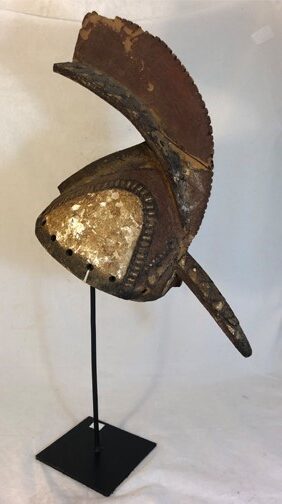
Mossi culture
20th century
Wood and pigments
L. 15 cm x W. 20 cm x H. 39 cm
MSU collection #2018.1.2
The Mossi culture of Western Africa neighbors the Bobo culture, and like the Bobo and other nearby cultures, Mossi artists predominantly use red, white, and black pigments and geometric patterns in their masks. Also like the Bobo, the Mossi make masks that represent bush spirits, which are nature spirits that take animal form.
Rooster masks are also among the earliest-known Mossi animal masks. They are strongly traditional in style, and they are believed by the Mossi to represent the reincarnation of totem animals, or ancestral spirit animals. Likewise, rooster masks are used in theatrical performances that tell a clan’s mythological origin. They are also used in harvest festivals, they are danced at funerals as protective spirits, and they may even be used to hold the blood of animals that have been sacrificed to the ancestors during these rituals. Researched by Brandellia Hang
For more information, you may contact the researcher(s) noted in the title of this exhibit entry, or Dr. Billie Follensbee, the professor of the course, at BillieFollensbee@MissouriState.edu
